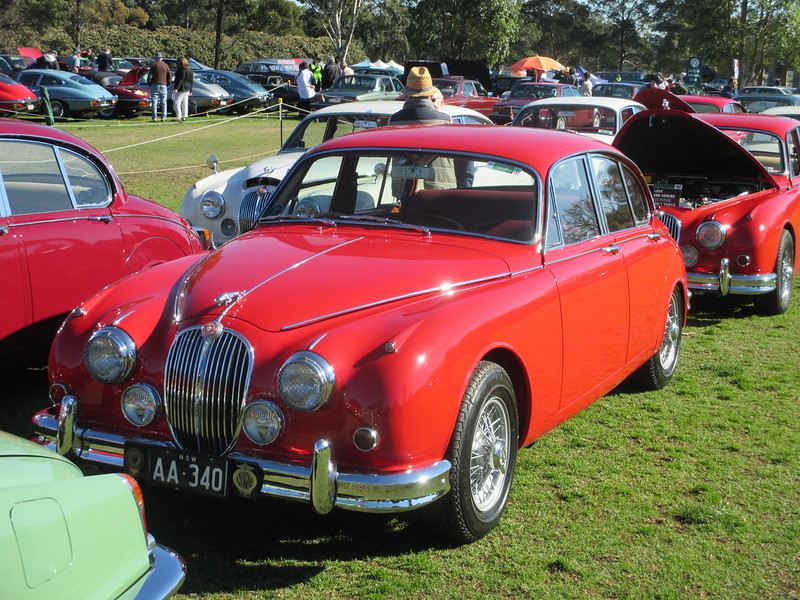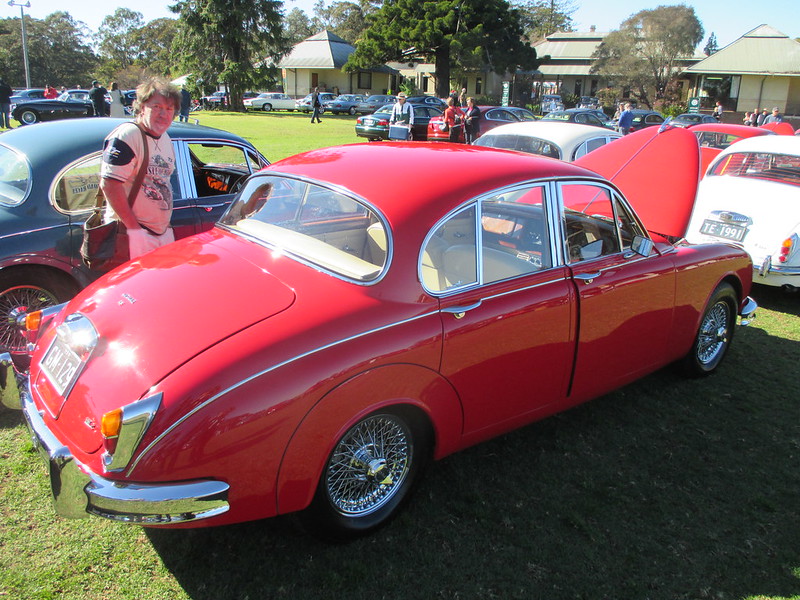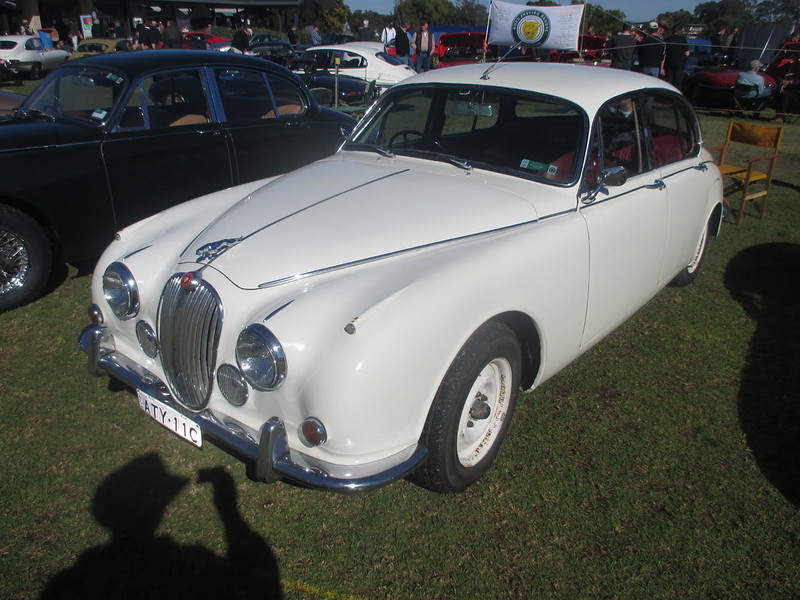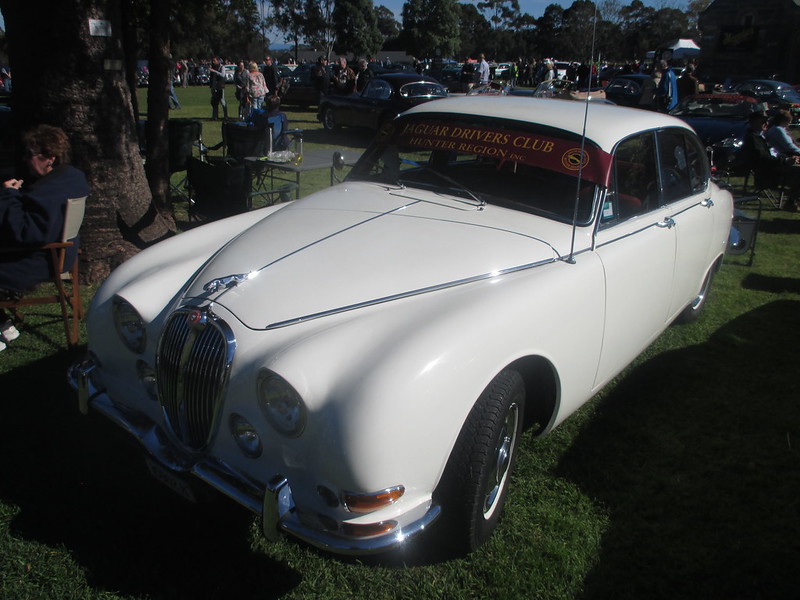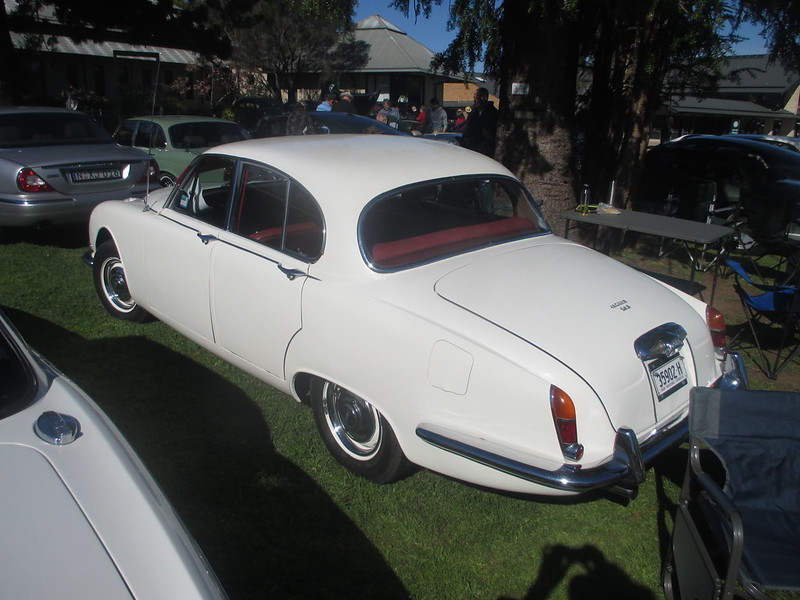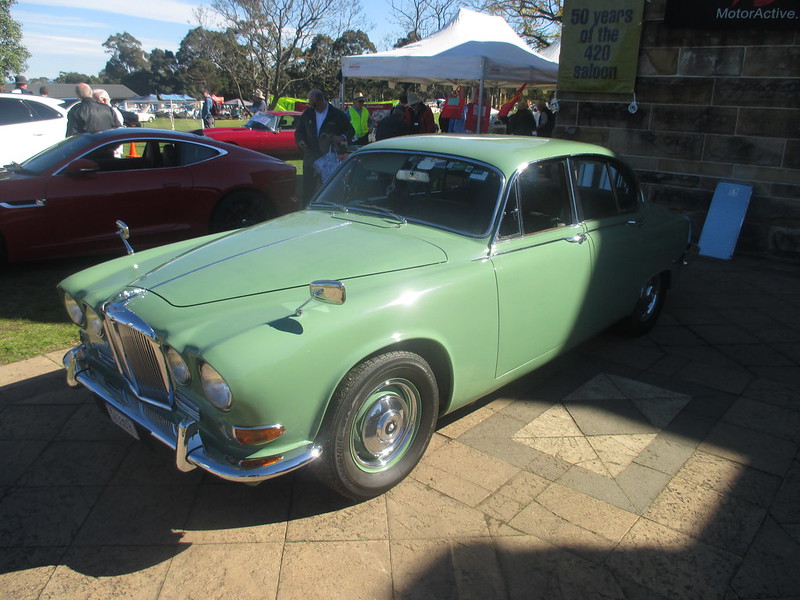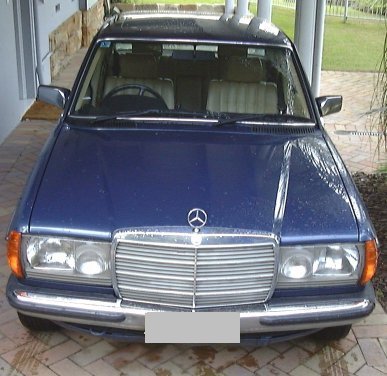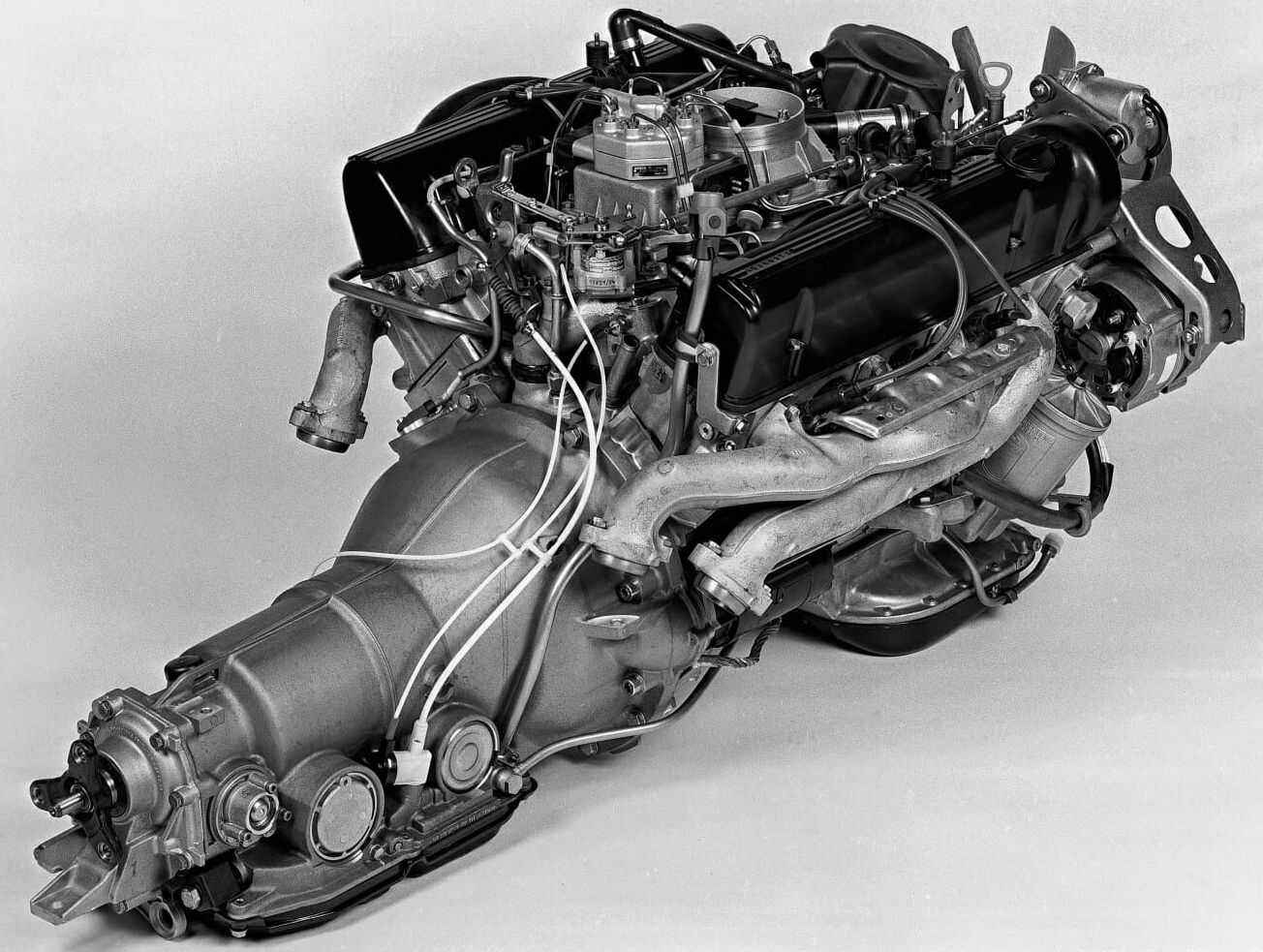The Jaguar Compact Saloons
The Jaguar Compact Saloons were a highly successful range of cars that lasted from the mid 50s right through to the end of the 60s. They gave Jaguar the production volume to stay relevant and with their world beating sports cars of the same era are still somewhat responsible for the reputation Jaguar has today. Despite these being the cheapest cars in Jaguar’s range, they have eclipsed their more upmarket and larger siblings in interest, and market value. This makes the full size saloons rather good value, but today the focus is on the compact saloons.
The compact saloons encompass the period from 1955-1969 and soon developed a reputation of a car for lovable rogues. They combined strong performance with raffish good looks and the practicality to seat five adults – not to mention their extremely inexpensive purchase price when new.
Over time the range became quite complicated, as shown in the table below that highlights years of manufacture, units produced and different families. Despite the vast range of models on offer, there were really four main variants: The original car, retrospectively named the MK 1; The much improved MK 2 and its associated Daimler V8; The slightly more upmarket S-Type and then the 420, styled to look like the big MK X.
Jaguar MK 1
The Mk 1 was Jaguar’s first monocoque design and was produced from 1955-1959. The MK 1 used the XK engine that had debuted in the XK120 and was now also used in the full size saloons (the MK VIII), starting with the new 2.4l size and later adding the 3.4l model as well. The car was known at the time as the Jaguar 2.4 Liter and the Jaguar 3.4 liter, with the Mk 1 Nomenclature only coming on the introduction of the MK 2.
During the production of the MK 1, disk brakes were made available as an option and an automatic transmission was also made available. The car has an unusually narrow rear track which results in interesting handling, and full spats over the rear wheels (unless wire wheels were specified).
The interior as expected from a Jaguar had lashings of leather and wood and was similar to the XK series sports cars. This includes things like steering wheel, dash layout etc.
While the MK 1 was very successful in its own right, it was totally eclipsed by the MK 2, and there are now few survivors. Once the MK 2 had been on sale for a few years, values of the MK 1 plummeted to next to nothing. At Jaguar car club events you’ll see at least 10 MK 2’s for every MK 1. Nice original MK 1’s are now comparatively rare. They are slightly lighter than a MK2, so a 3.4 MK1 is a little faster than a 3.4 MK2.
As Jaguar did not own Daimler at the time, there was no Daimler version of the MK 1. The photo below shows a MK 1, the most obvious way to identify one is the smaller windows, but careful inspection shows slight differences to the front too. This car, having wire wheels does not have the spats as the knock offs would not fit.
Jaguar Mk 2
The Mk 2 is the definitive compact Jaguar Saloon and was produced from 1959-1967 (not including the 240/340 which is covered separately). The MK 2 was the product of a number of major improvements over the MK 1, including slender A, B and C pillars giving the car a lighter look and much greater glass area, a redesigned dashboard that would be similar to the upcoming E-Type, Significant suspension improvements, standard disc brakes and now with the option of a 3.8 liter version as well as the 2.4 and 3.4. As with all Jaguar engine outputs of the time, the published numbers are wildly optimistic. The 3.8 liter engine, rated at 220hp will realistically make 160-170hp in good tune.
The 3.8 is the one (manual, with overdrive) that all the collectors want, and therefore this model commands a premium over the others. In some ways, the modern day BMW M3 now occupies the same place in the market that the 3.8 MK2 did. Based on this, the 3.4 is much better value as the performance is not dramatically different. MK2s reached massive values in the 80s and then suffered a big drop, with slow but steady increases over the last couple of years. There are always plenty of MK2’s to choose from on the market due to the high production rates and generally good survivability. A number of MK2’s have been modified for classic rallye purposes and are now sporting the 4.2 liter engine from the 420. It is also common to find other ‘upgrades’ such as XJ40 seats. These are not to my taste, but quite common.
It was a 2.4l MK2 that was driven by John Thaw in Inspector Morse. The photos below show two different red MK 2’s from both ends, highlighting the styling that has made these cars so popular. The 3.4/3.8 models are real sporting saloons, and apparently the 3.8 was the fastest saloon car in Britain at the time. The 2.4 is more leisurely, especially if equipped with an automatic.
The 240 and 340
The original plan was that the MK2 would be replaced by the S-Type. The MK2 was still selling well, so it was continued and sold alongside it. With the advent of the 420 and the upcoming XJ6 on the horizon, it was repositioned as a cheaper offering, with a reduced price and specification. The leather trim was deleted, the bumpers simplified, and other changes made that generally cheapened the car to better reflect its position in the Jaguar line up. These cars sell for a slight discount to a regular MK2. The 2.4 received the straight port head so performance was a little better. These are often represented as MK2’s when for sale, but strictly speaking they are a different model.
Officially the 3.8 was withdrawn, reflecting the 240/340’s position in the market, but a handful of 380’s did sneak out the factory gate.
The Daimler V8
In the Early 60’s Jaguar was a company on the up and was looking to expand its production facilities, however the socialist government would only allow expansion into low employment areas, so Jaguar purchased the struggling Daimler company, who had an underutilized factory nearby. The Daimler company had always appealed to a higher class / old money buyer and had recently introduced the SP250 sportscar with a great little V8 engine. This engine was tested in the MK2 body shell and a new model was born. The 2.5 Liter V8 as it was originally called was slightly more upmarketly trimmed and equipped than an equivalent Jaguar (the 2.4), and the 2.5l V8 offered significantly better performance than the 2.4 liter XK, although not to the level of the 3.4 or 3.8. Based on its buyer type the car was originally only offered with an automatic transmission, but in later years a manual was also offered, albeit in small numbers. The body also featured the ‘fluted’ Daimler grille, hubcaps etc. The Daimler didn’t cannibalize sales of the MK2 in any real way as it appealed to a different buyer.
The Daimler V8 was produced all the way through when the Daimler versions of the XJ6 were introduced in 1969 and it offers one of the best value ways of getting into a ‘MK2’ – with a much better engine than the 2.4 liter unit.
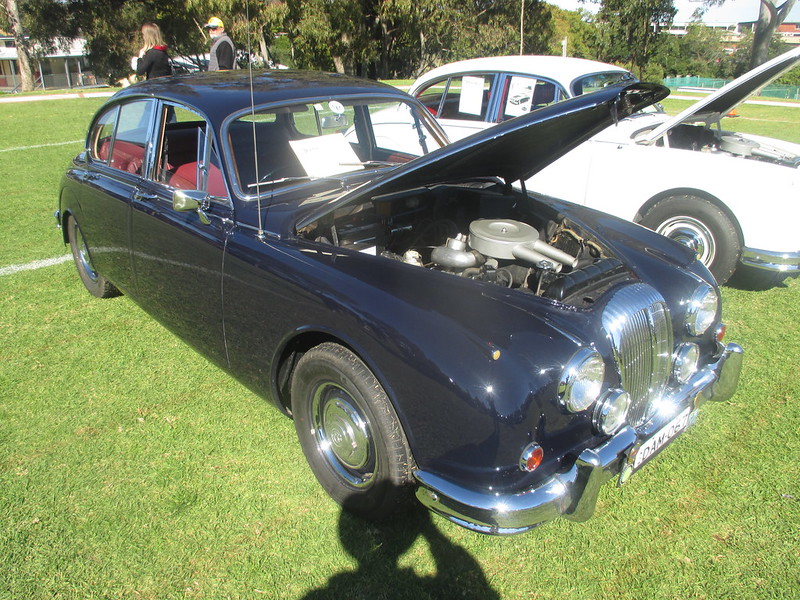
Jaguar S-Type
The S-Type was a further evolution of the MK2 and in some ways could be thought of as a MK 3 model. It provided a step up in luxury and refinement over the MK2 with the independent rear suspension from the E-Type and MK X, an improved interior based on the MK X including better ventilation, more boot space and rear passenger space and so on. Originally planned to replace the MK 2, in the end it was sold alongside it as a slightly more expensive option.
Many collectors do not appreciate the rear end styling changes of the S-Type, and feel the long boot and flattened roofline are not in keeping with the front of the car, which was very similar to the MK 2 (the most obvious change being the eyebrows over the headlights). However, styling aside, with the independent rear suspension and better interior, the S-Type is probably the better car. Regardless of this, market values are Significantly lower than for a MK2 primarily because collectors find the MK2 the definitive compact Saloon. It is heavier than a MK2, so acceleration is slower. However the independent rear suspension makes up for this in real world driving. I’m really not sure why anyone would buy a 2.4 MK 2 when a 3.4 or 3.8 S-Type is worth basically the same.
The S-Type was also the first in a long line of Jaguars with twin rear fuel tanks. At least in Australia, many S-Types were sold with an automatic transmission. There was never a Daimler version of the S-Type. Due to the extra weight, and the S-Type being a more upmarket car, there was never a 2.4 version. The 3.4 and 3.4 were badged as 3.4S and 3.8S, and there was never an S-Type badge as such.
The 420 & Daimler Sovereign
The 420 was the last and most powerful of the Compact Saloons before they were replaced by the XJ6. It builds off the S-Type, so again it can be thought of in some ways as a ‘MK 4’ (not to be confused with the MK IV) – now the front of the car has been restyled to resemble the much larger MK X and complete the job that was started with the rear end restyle of the S-Type. It also took the 4.2 liter engine from the MK X with a dual carburettor set up.
For the Daimler Sovereign, the car was simply a 420 with Daimler badging and some upgraded trim. The specific engine as was found in the 250-V8 was gone and the 4.2 XK unit was found same as on the 420. It would have been interesting if Jaguar had considered using Daimler’s 4.5 V8, but for such a low production model it wouldn’t have made sense cost wise.
Optional on the 420 and standard on the Sovereign was variable rate power steering, and as a derivate of the S-Type both cars came equipped with independent rear suspension.
The 420 has largely been forgotten about and is quite inexpensive compared to the MK 2. Sadly, many 420’s ended up as engine donors for MK 2’s and even E-Types and while this model was never common, survivors are not plentiful. Note the 420 should not be confused with the 420G, which was the new name for the MK X.
Summary
The Jaguar compact saloons are a very attainable classic car with models to suit a variety of tastes and budgets. Parts supply is good and the cars are practical and can keep up with modern traffic. Many have been been given minor modifications to allow them to continue to be used as daily drivers – uprated radiators, air conditioning, electric ignition etc. Like with a lot of classic cars, the collectors are very focused on one particular model leaving the others more attainable for the rest of us. Some people find the S-Type ungainly but many disagree and this keeps prices more reasonable.



